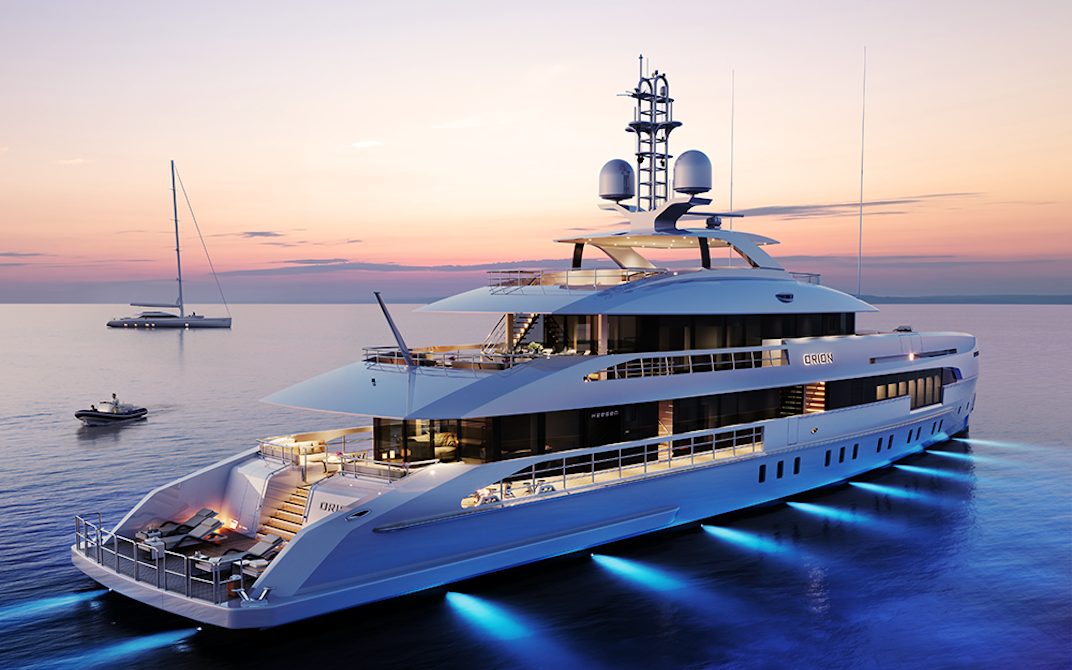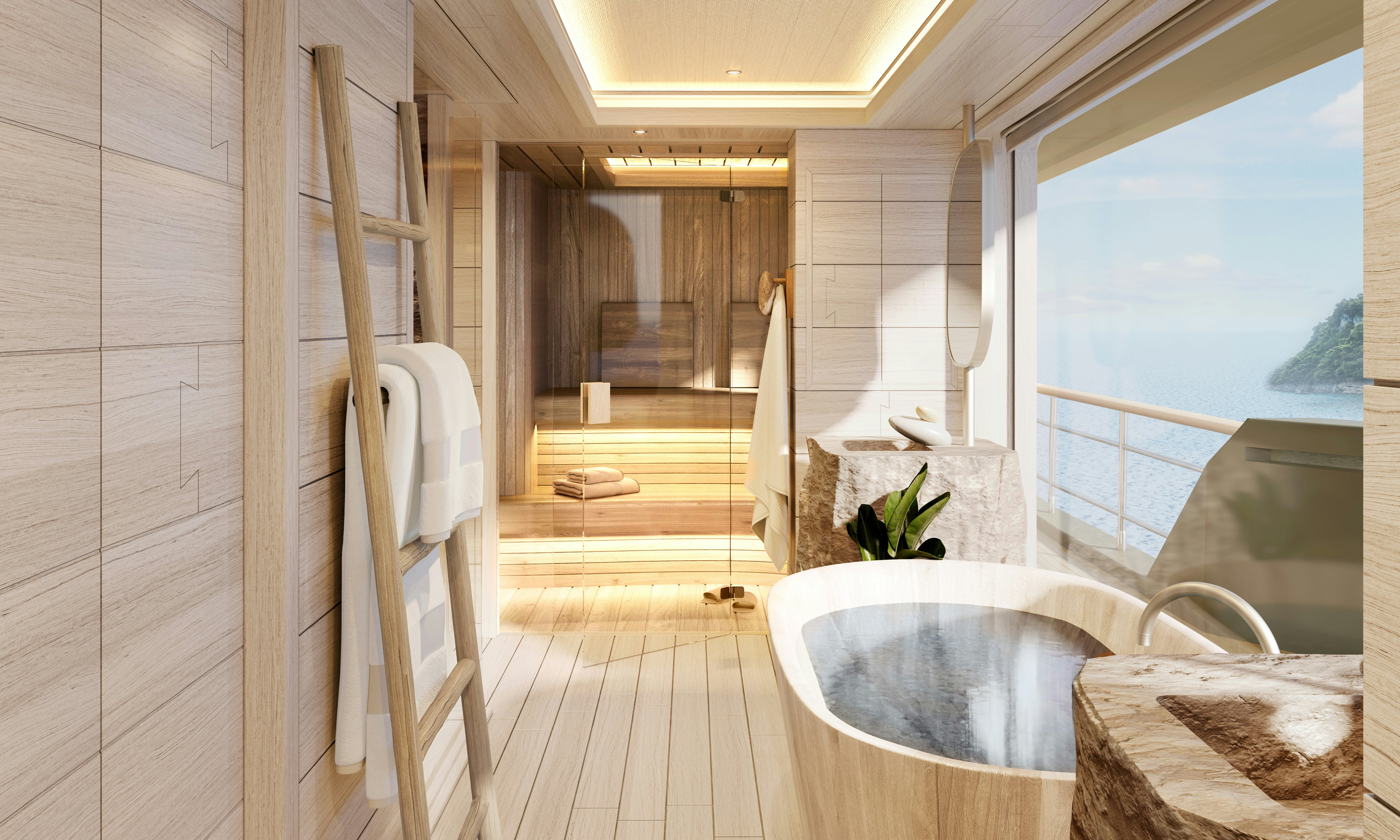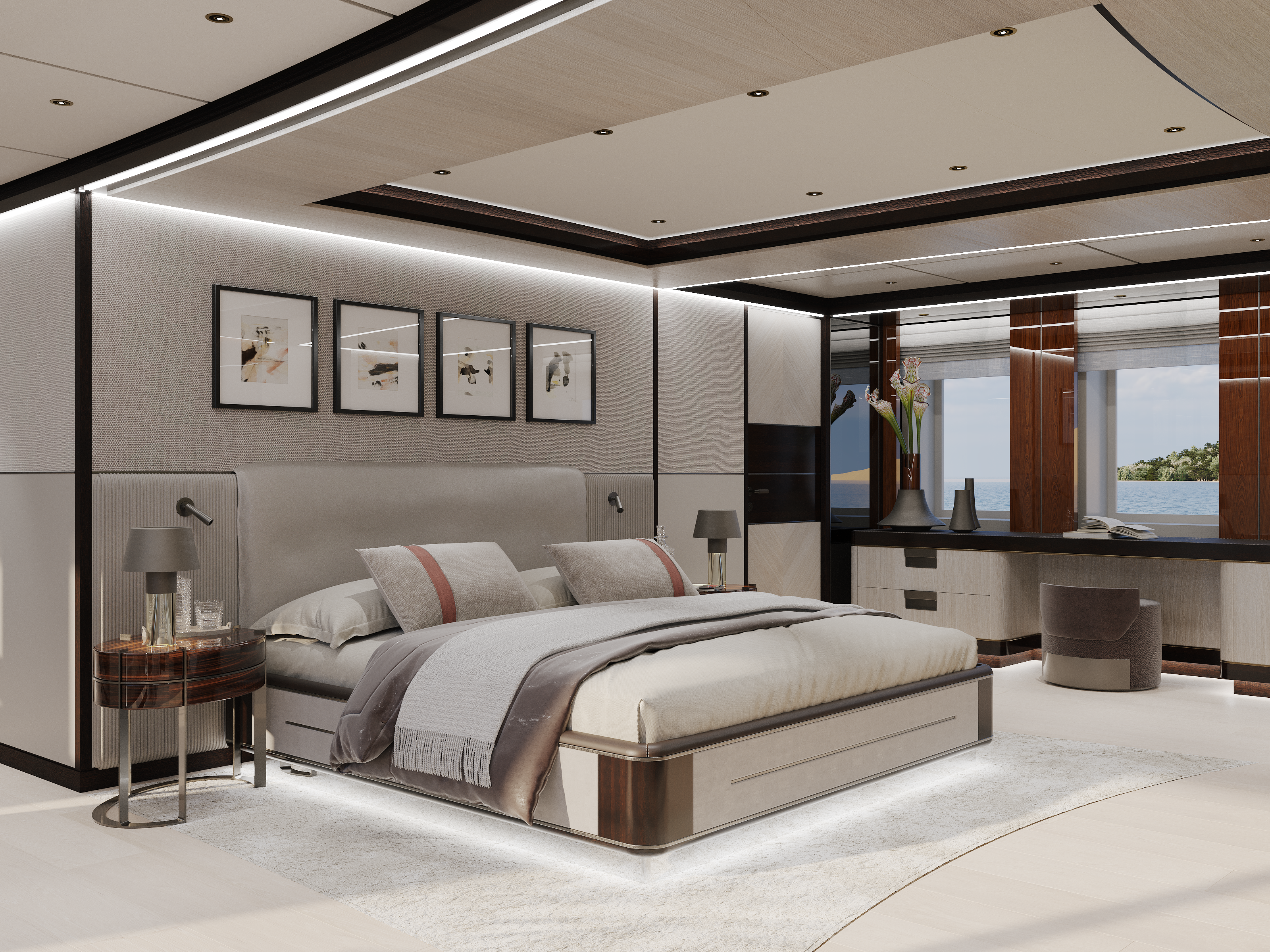Charting the Superyacht Industry's Ecological Journey

The superyacht industry has been talking about lessening its ecological footprint for more than a decade, but how much has it succeeded in doing so? Navigator talks to representatives from the industry’s various fields about where they feel we are on the journey, how far the industry has come, and what they believe still needs to be done to ensure the protection of our oceans.
Jim Dixon
Managing Partner & Creative Director
Winch Design
Mark Cavendish
CCO
Heesen Yachts
Laura Pomponi
CEO
Luxury Projects
Giedo Loeff
Head of Research & Development
Feadship
Do you believe that the industry’s efforts are having a genuine impact on reducing its ecological footprint?
JD – Sustainability is center stage across the whole industry. If we do not become more proactive about protecting our ocean, we will become irrelevant to the clients of tomorrow and may find ourselves falling foul of an unfavorable regulatory environment. While there is still a long way to go with regard to environmental considerations, we are certainly seeing a more conscious effort from designers, shipyards and clients alike.
MC – There is no doubt that in comparison to where the superyacht industry was a decade ago, there have been huge improvements. Everyone is aware of the importance of changing for a more sustainable future, which has led to tangible initiatives and innovations being rolled out across various stakeholders. In 2019 Heesen launched BlueNautech, a comprehensive sustainability program aiming to reduce yachting’s environmental impact. As part of this initiative, we recently invested $1.3 million to cover 80 percent of our shipyard’s roofs with solar panels —60 percent of Heesen’s power needs are now produced by solar.
LP – The yachting industry accounts for only a small portion of the marine industry, therefore, efforts are limited. But, superyacht owners are often people of great influence, some of whom are true game changers on a global basis. If our call for greater sustainability has an impact on them, even if it’s just to increase their level of sensitivity, it is a step forward.
GL – Awareness and understanding of this broad topic have certainly improved. We know of a couple of very significant new-build projects on their way from various yards and some very significant industry cooperation has been established, driving awareness and pushing innovations in technology. The existing fleet is considering “green” refits, the industry is starting to bunker non-fossil fuels, and clients are increasingly looking for sustainable alternatives in new-build projects.
“The wind is changing,” Laura Pomponi, Luxury Projects.
Where do you see the industry currently, if the original 1990s status quo was zero and a zero environmental footprint was at 10?
GL – Relative to the 1990s, the impact of the yachting fleet on the environment has increased significantly. This is mainly due to the extreme growth of the fleet, both in the average size of a superyacht, and in the number of yachts being built. Since 2008 the greenhouse gas emissions emitted have more or less tripled, while the ecological impacts associated with yachting have also increased. On a positive note, the emissions of nitrogen oxides are in decline due to the involuntary regulations for the most recent new-build projects (and replacement engines in the existing fleet).
MC – We need to be realistic, and therefore I would suggest somewhere between three and four. We have seen huge improvements, but there is always scope to do more. The biggest challenge is finding a viable propulsion alternative to diesel engines. Heesen was the first shipyard to build a superyacht sporting an ultra-efficient Fast Displacement (FDHF) hull combined with a hybrid propulsion system. There are also exciting innovations happening with alternative fuels – including methanol and hydrogen – but the nature of these fuels means that these projects still face significant challenges. It highlights the ongoing need for rigorous research, development, and problem-solving.
LP – It is difficult to say whether the industry itself is doing enough; there is no single solution but rather a process, and this process has undoubtedly begun. Technology has improved, enabling us to be sustainable without compromising on luxury and comfort. Yet we continue to lag behind others in the marine industry, such as passenger vessels. As designers, we have to speak a new language that cannot be ignored. Sustainability is a powerful driving factor influencing creativity.
How fragmentary do you see the efforts and successes in the different yachting sectors?
JD – It is the responsibility of the entire supply chain to embed sustainability into its practices. As designers, we have the power to affect real change by showing our clients beautiful, durable, authentic materials that are also sustainable.
GL – There has been an increased effort between the designers, architects, shipyards and crew to share knowledge, something which I believe is essential given the complexities involved in yachting. We have also seen cooperation between the industry and other shipping and energy sectors, which is of huge importance to us at Feadship. We recently teamed up with parties in data research and the fuel and chemical sectors, to exchange ideas and information and gain a better understanding.
MC – The competitive and secretive nature of the superyacht industry lends itself to fragmentation. Efforts to enhance sustainability within the industry are facilitated by the Superyacht Builders Association (SYBAss), which actively coordinates sustainability issues across various shipyards. This serves as a pivotal mechanism for breaking down barriers and promoting collaboration among industry players. SYBAss acts as a central hub where shipyards can share their experiences, ideas, and blueprints related to sustainable practices. This collaborative spirit not only fosters a more transparent environment but also ensures that valuable insights are disseminated throughout the industry, and affords businesses the autonomy to find their own path.
In your experience, how many clients genuinely mention their concern for the environment when looking to design and build, purchase, or charter?
JD – Clients are becoming increasingly aware of the topic and the need for us all to engage in order to see real change, particularly younger clients. We are currently working on a build with a client who is incredibly passionate about eco-living, health and wellbeing. The interior will be crafted largely from eco-friendly materials, favoring practices that create low levels of electromagnetic fields (EMF) and materials with low volatile organic compounds (VOC) to deliver a clean living environment. Materials used include reclaimed seashell composite, eggshell textured walls, recycled wood chip tabletops, palm leathers, eggshell faux coral finishes and paperstone (a stone-like paper composite surface material). The interior will mark a new standard for sustainability and the production, carbon footprint and appearance of all materials has been meticulously monitored by the in-house Winch Design Sustainable Materials Specialist working alongside experts EcoNest to achieve global standards for a healthier living environment.

Winch Design is currently working with a client on the 144’ (44m) Flexplorer with Cantiere delle Marche
MC – Heesen’s client base covers a wide range of demographics and nationalities and thus, a spectrum of demands and focus areas. Sustainability is increasingly becoming a factor and we only expect this to grow as a younger generation of owners enters the industry. We recognize that we need to invest in the future and Heesen’s 164’ (50m) ORION speculative build (FDHF hybrid) is the perfect example of this.
LP – Some owners push towards sustainability, others less so. It is our responsibility as designers to rethink both the processes and the design accordingly and to propose sustainable solutions, the majority of which are without compromise.
GL – A number of Feadship clients are really making a difference. Some are making the step to run their existing yacht on non-fossil fuels, or building a new Feadship incorporating fuel cells, further electrification and enhancing energy efficiency improvements. To them, it is not only their yacht but an acceleration in innovation – these are people who are market changers. While these are not average superyacht owners, still, the majority of Feadship’s clients still consider the alternatives we offer and in some cases, accept that we just implement them.
Is there another industry that you believe has successfully managed to make a difference, or one that you think the yachting industry should imitate?
GL – Yachting is quite unique, but from an environmental impact view, there is some analogy with the aviation industry, and when looking into material alternatives or battery technology, we find a lot of relevant developments in the automotive sector. That is a massive industry with equally massive development budgets. Systems for data centers and grid stability are relevant, but the global shipping market is the “other” industry we are most dependent on in terms of research and development in non-fossil fuel alternatives. They are driving this change.
MC – It is hard to draw any direct comparisons with the yachting industry, but the supercar industry is an interesting model. Ultra high-end brands, including Aston Martin and Rolls-Royce, are all trying to find ways to balance emissions targets with performance demands. The ability to utilize electric engines allows them to potentially accelerate their sustainability journey. The way that these brands market these cars and work with their client base to position them as the new pinnacle of luxury will be an interesting litmus test for the superyacht industry to learn from.
LP – The automotive industry is a source of inspiration, as is the aerospace industry. Combined university and industry research is gaining traction and helping pave the way for a more sustainable industry.
What do you see in the future for the yachting industry?
GL – I see the yachting sector collaborating in research, regulations and system developments. We will have multi-fuel superyachts in the second half of this decade, being fueled with non-fossil fuel, running fuel cells for the base load when stationary (90 percent) without any pollutant emissions, and running engines when sailing (10 percent) with hardly any pollutant emissions. In the long run, whether we can fully step away from engines will depend on global fuel availability and system innovations.
JD – It’s hard to predict, but I’m sure research and development will allow truly sustainable and viable methods of propulsion to be found. As the clients get younger, the demand for the use of sustainable propulsion methods and materials will increase.
A resurgence of interest in sailing yachts would be great to see, whether that be a focus on eco-catamarans or electric-drive sailing yachts. The combination of classic sailing appeal with cutting-edge eco-friendly technologies offers a compelling future for this sector. As environmental awareness grows, more yacht owners will likely seek sustainable options that align with their values, and sailing yachts with eco-conscious features have the potential to become a highly sought-after choice in the yachting market.
MC – Sustainability is going to increasingly drive the political and economic agenda globally, and the yachting industry will, of course, have a role to play in this. Given the innovation and creative talent within the industry I have no doubt that yachting will find a more sustainable future that allows future generations to discover the world on board these beautiful vessels.

Heesen are working with Luca Dini, who has taken innovative strides in sustainable yacht design. His interior concept for Heesen’s new 180’ (55m) steel series demonstrates a commitment to sustainability by utilizing predominantly eco-friendly materials.
LP – Regulation is key in making yachting a more sustainable industry, and we will see the regulatory bodies, flag and class bodies implementing stricter rules enforced by IMO. This is already happening, but it is a slow process.
And finally, what part will you personally play to help the yachting industry?
GL – I will continue to push for regulations and fossil-fuel alternatives.
JD – We understand the need to align with the rest of the yachting and wider shipping industry to collectively drive change, share knowledge and promote technology. While superyachts represent only a fraction of the carbon footprint and market volume of global shipping, they provide unparalleled access to the necessary knowledge and capital to solve its greatest issues. We need to turn superyachts from lavish toys to purposeful vessels of innovation, capitalizing on our influential clients to advance research and development.
We are also committed to demonstrating that sustainability is synonymous with bespoke top-end design at the highest level. We have sustainable solutions embedded in our designs and we educate our clients and partners in choosing the best option for them and the environment. It is our job to make the sustainable choice so desirable that everyone wants it.
MC – I have been fortunate to be involved in the yachting industry for more than four decades. I am proud of having been at Heesen during a time when we launched our first hybrid superyacht and Heesen’s BlueNautech programme. I look forward to continuing to be part of Heesen’s ambitious future and seeing how the brand can push the boundaries in sustainability, but also achievable, sustainable innovations.
LP – I believe in keeping abreast of developments while at the same time working with clients to create the most luxurious and sustainable designs possible.
Read Next
Navigator Newsletter Stay informed on all things yachting and luxury lifestyle with the bi-monthly Navigator newsletters.
